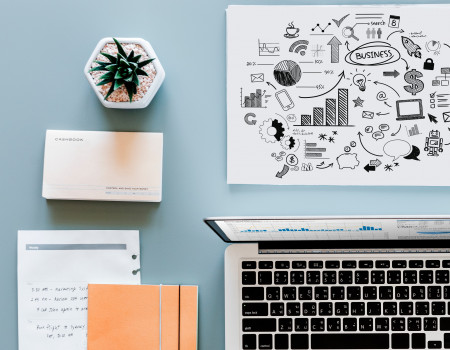For instance, it may refer to the development of our business. An increase in demand for a product or for groups of products may change the operating method of the marketing department and sales with regard to a specific target group. If we run a shop selling fans, we could make use of average annual temperature ranges to determine when it is profitable to order larger quantities of goods. Isn’t that smart? And what if we talk about global business?
The way in which analytics developed around the world is quite simple. At the beginning, we acquired data and created operational reporting on its basis. Another step was analytics answering the question of what had happened that we received a specific result. This was followed by multidimensional analyses in the OLAP data structure. These complicated spreadsheets made it possible to process rapidly growing quantities of data within the scope of their mutual relationships. Today, instead of asking what happened, we ask why it happened. We are entering the era of predictive analytics.
Looking forward
In further periods, we may deal with prescriptive analysis, which will help to answer the question of what a business should do. Equipped with its own artificial intelligence, it will not only deliver predictions but also prompt the best solutions for the existing situation. For example, it will assess what kind of customer will buy a product in our shop and what we can offer as a supplement to that specific user. We will also learn how products are connected and what relationship exists between goods and customers.
It is already happening
For the time being, artificial intelligence does not do all the work for us. We can obtain a great deal of information from the data we have collected.
If Nokia had asked itself a question and analysed the available data at the proper time, today it might still be the leader in the production and sale of mobile phones. The beginning of the end for the Finnish giant dates back to 2007 when Apple presented its first iPhone with a touch screen. It is worth emphasising that the first global patents of this solution – and also the first finished products – were elaborated by the Finns.
Another nail in the coffin was the fact that Finns did not develop their Symbian operating system, which made users feel uncomfortable with the equipment of this company. Nokia made even more mistakes in the prediction of trends: from ignoring the fashion for phones with a flap to the lack of an offer for younger generations of users. Nokia’s overall anachronistic approach to business resulted in stock exchange decreases and in selling the company to Redmond-based giant Microsoft.
We should not be like Yahoo
The history of Yahoo and AltaVista search engines is a similar example. While Yahoo may still sound familiar to us now and then, AltaVista was rather doomed to oblivion (it was closed in 2013). But let us go back to 1998.
Two young students of Stanford University make a proposal to AltaVista and Yahoo on the sale of their search engines Google, which contains a modern page segregation algorithm PageRank. The asking price is only 1 million USD. Both companies refuse. In 2002, Yahoo realises that its decision was wrong and evaluates Google at 3 billion USD. However, Google sets the price at 5 billion USD and Yahoo refuses to buy.
In 2008, Microsft propose to buy Yahoo for 40 billion USD. Yahoo refuses. In 2016, Yahoo is sold to Verizon for merely 4.6 billion USD. Now let us imagine that we have data from which we can learn about trends and the level of use of our solution. Why do we fail to make use of them and repeat the case of Yahoo?
Predicting the future
On the example of the mobile phone operator, we can understand how modern predictive analytics and optimisation work on the basis of SAP Analytics Cloud. Imagine that we want to contact customers who will buy our product or service. How to choose the customers who are interested in our offers from the database?






